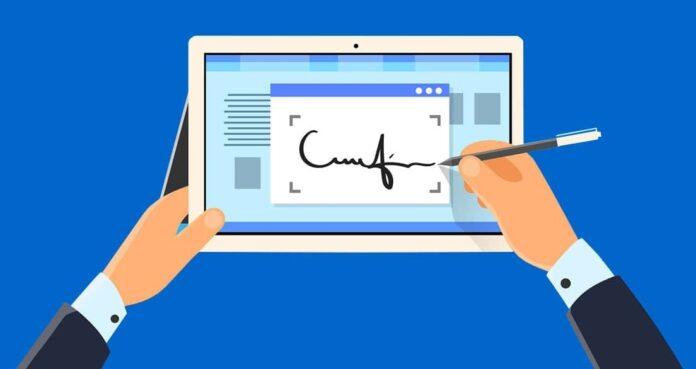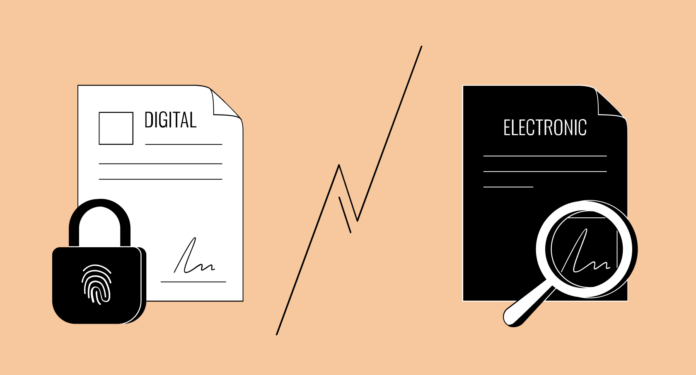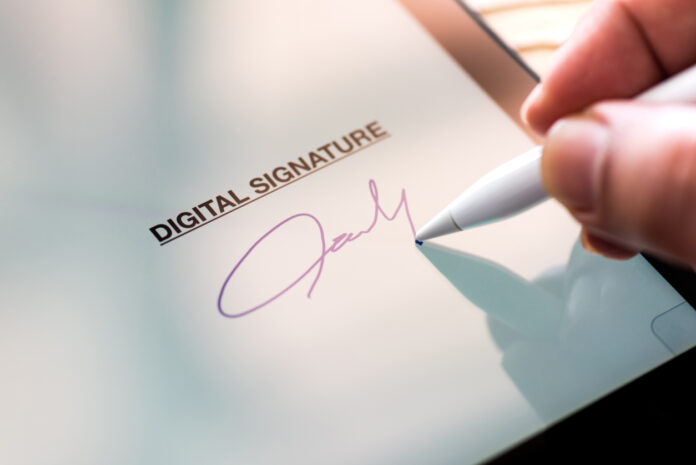Electronic signature has been on the rise, primarily due to the increased dependence on electronics. It is never a pleasant sight to have a sign disappear on paper, or a critical activity gets halted because of the drawbacks of physical signatures. Especially after the coronavirus pandemic, it has become essential to shift the top virtual means of almost everything.
It is because of this that electronic signatures have lately flourished. They also have massive benefits. The industry of information technology has advanced rapidly and can ensure that documents or agreements are authenticated without the requirement of an actual physical sign.
What Do The Laws State?

Long back, even when there was no internet, there was a good use of electronic signatures. The use of fax machines meant that the fax machine would print even a signature that was signed physically in the place it was delivered. The statutory laws suggest that it has been a legal right from the start. Using digital signatures is not a significant issue as long as the authenticity is confirmed and accepted by regulators. Sometimes, certain activities require an individual to be present in person for a signature.
Even a person who knows how to sign might be asked for finger impressions for specific formalities. In such cases, only the demanded procedures will be accepted, not a digital signature.
Difference Between Digital And E-Sign

The common idea is that digital and electronic signatures are the same. However, it is not so. This is a major misconception that the general crowd has about them. Firstly, digital signatures are not signs literally. They are something like a code that is unique to a particular individual or a document. In this way, sensitive documents and agreements can be authenticated. The originality of the papers can be determined.
Beyond that, digital signature certificates show if the individuals themselves are causing changes. Many times, people have to file on government documents and websites. It is here where digital signs come in handy. Any document that is uploaded with the key of DSC is deemed to be correct and confirmed.
On the other hand, an electronic signature implies that a physical signature is either converted to an electronic means or the physical sign itself is done on electronic means. The means to do this is to sign on a screen that is responsive to a stylus. Signing with the mouse or touchpad is also common. It is commonly and widely used in courier services. Another primitive way is to sign a piece of paper and then convert it into electronic means by clicking an image of the sign. It is, however, not accepted by all authorities. Despite the legality, it may get rejected by some organizations.
Multiple organizations provide services for digital signature. “Firma digitale online” means a Confirmo digital firm online in Spanish. The use of digital signatures is on the rise, and it is also recommended to get involved in it to ensure that security is never compromised on.
Benefits Of E Sign

Time Constraint
For physical or ink based signs, one needs to actually sign on the respective document, which might take weeks to ship. It might halt vital activities like acceptance letters or rejection letters. Pay orders and return requests often need them. It is therefore impossible for high priority tasks to be completed when one has to wait for physical signatures all the time. With the presence of digital signs or electronic signs, there is the ease in communication as the sign is transferred over signals or the internet. Two parties sitting in different parts of the world can make agreements without having to wait for the delivery of paperwork.
Money Saving
The amount of money it will cost to deliver documents across the world will surely be more than the costs required to run a digital signature regularly. Governments also do not have to employ too many people unnecessarily, which would raise the cost of signatures and legal work. Paper prices have soared lately; therefore, saving on paper will help save more money. Individually, it might not seem like a huge difference, but in aggregate, the costs are drastic.
Authenticity
Whenever electronic signatures are signed, they are done with immense accuracy. The sign can be detected and examined more profoundly. Paper signs can differ quite a bit and may require specialists to identify whether a sign on paper has been initiated or not. Even then, the clearance of documents depends on the judgment of human eyes. Digital signatures are incredibly beneficial when the originality of a paper has to be maintained. There is the end to end protection in that way.
Legal
Electronic signatures, as mentioned before, are absolutely legal. All authorities accept them unless it is specified that there is a need for another means of a sign. In places where fingerprints are required, the impression can be on paper or on a device scanner. Most organizations use such electronic means.
Environment Protection
The amount of paper that is used in signing and sending documents can be reduced by digitalization. Paper is produced from wood and cannot be recycled beyond a certain level. Therefore, it has enormous costs on the environment. With digital signatures, the load on paper will be reduced, and it can be put to use in alternative areas. Beyond the use of paper, ink is also manufactured. In a household, it might seem too little a thing to focus on such costs but considering multiple homes at once, and it can be seen that the prices are enormous. The carbon footprint in the production of ink used on signing is so huge that it contributes to global warming significantly.
Conclusion

E signatures can be used in many areas and are therefore universal in nature. They are not only legal but are also the more preferred form of signs these days. People who send multiple documents, notices, invitations, or mails need to sign numerous times. The use of e-sign features can reduce this.









